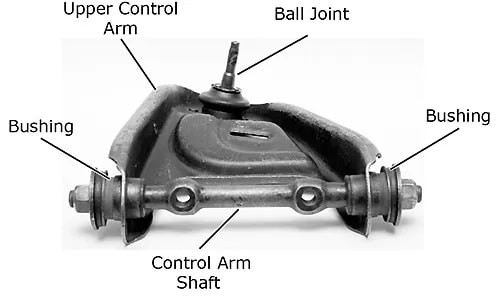Ball joints are essential components of a car’s suspension system, playing a crucial role in steering and overall vehicle control. Understanding their function and maintenance is vital for safe and reliable driving. This article delves into the intricacies of Ball Joint Cars, exploring their types, signs of wear, and replacement considerations.
Types of Ball Joints in Cars
Most vehicles utilize both upper and lower ball joints. Upper ball joints are typically non-load bearing, often referred to as “followers,” while lower ball joints usually bear the weight of the vehicle. This distinction impacts their wear patterns and replacement intervals.
Recognizing Worn Ball Joint Car Symptoms
The constant motion inherent in a ball joint’s operation leads to eventual wear and tear. Recognizing the signs of a failing ball joint is crucial for preventing further damage and ensuring safety. Common symptoms include:
- Excessive Vibration: Noticeable shaking or vibration felt through the steering wheel or floorboard can indicate worn ball joints.
- Rattling or Clunking Noises: Knocking, clunking, or banging sounds, especially when traversing bumps or turning, often signify loose ball joints.
- Irregular Tire Wear: Uneven wear on tire treads, particularly on the inside or outside edges, can be attributed to faulty ball joints.
- Vehicle Pulling to One Side: A car drifting to one side while driving, even with proper alignment, may signal worn ball joints.
When to Replace Ball Joints in Your Car
Ball joint lifespan varies, typically ranging from 70,000 to 150,000 miles. However, driving conditions and vehicle type significantly influence their longevity. Regular inspections are crucial for timely replacement. Ignoring worn ball joints can lead to catastrophic failure, potentially causing loss of vehicle control.
Ball Joint Car FAQs
1. How Long Do Ball Joints Last?
Ball joint longevity depends on various factors, but they generally last between 70,000 and 150,000 miles. Regular maintenance and inspections can help maximize their lifespan.
2. What Happens if a Ball Joint Fails?
Driving with a worn-out ball joint can compromise steering and suspension, potentially leading to a loss of control and accidents. It can also damage other suspension components.
3. Can I Check Ball Joints Myself?
A common DIY method involves jacking up the vehicle and checking for excessive play in the wheel. Visual inspection for grease leaks or damaged rubber boots can also be helpful. However, professional inspection is recommended for accurate diagnosis.
4. How Can I Extend Ball Joint Lifespan?
Regularly check for wear and tear, ensure proper lubrication, avoid rough terrain when possible, and adhere to the recommended maintenance schedule for your vehicle.
Conclusion
Ball joints are integral to a car’s safe and efficient operation. Understanding their function, recognizing signs of wear, and performing timely maintenance are crucial for ensuring a smooth and controlled driving experience. Consult a qualified mechanic for diagnosis and replacement to maintain the integrity of your ball joint car’s suspension system.

